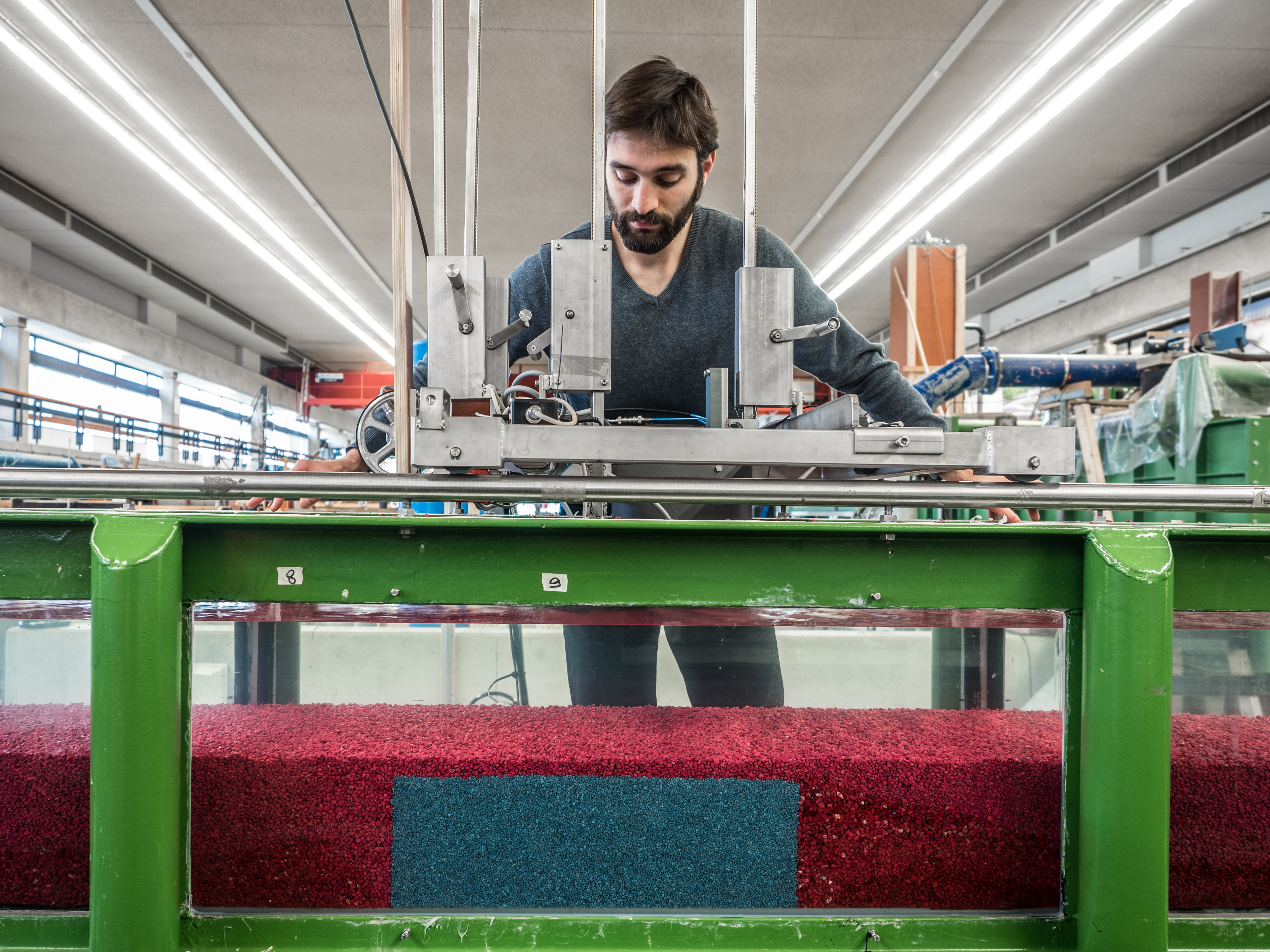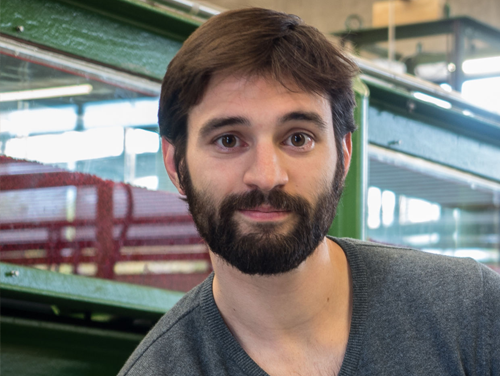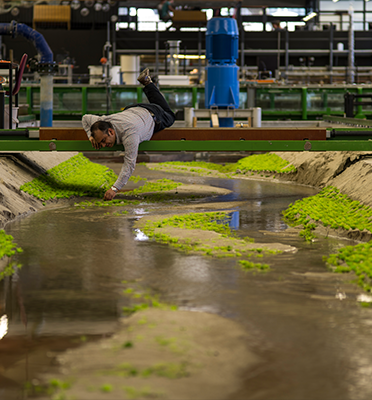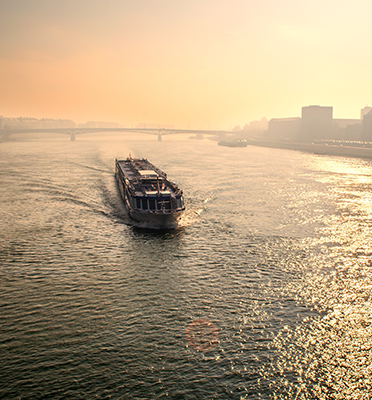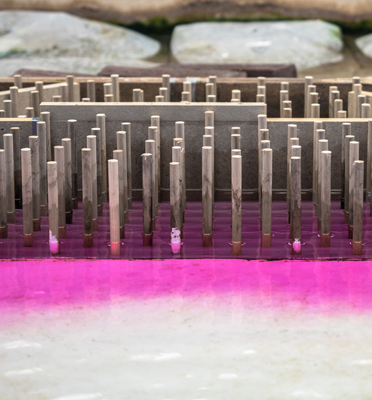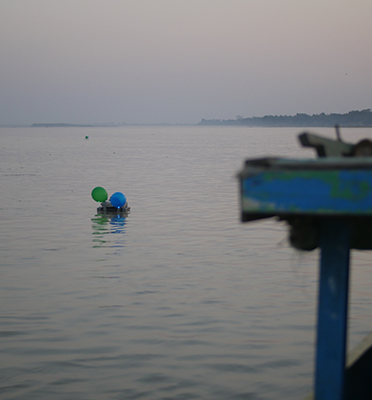Rivers meander: it’s what they do. They make their way through the landscape twisting and turning as they flow. In the Netherlands a meandering river has become a rarity. ‘Many rivers worldwide have been ‘humanised’,’ says Victor Chavarrias who is researching rivers, with the Rhine as his case study. ‘200 years ago the Rhine meandered strongly. That made life in the floodplain dangerous and the transportation of goods very inefficient. To overcome these difficulties in the 19th century they started cutting the bends and narrowing the river with the construction of groynes.
One of the consequences of these interventions is that the river bed degrades, which is problematic for instance, for farming, or for the stability of foundations of fixed structures, such as bridges. ‘The river has also been used as a source of sand by companies, which has made the problem worse. Taking sand from the river is no longer allowed unless it is put back in other parts of the river.’
Do not make the same mistakes twice
The solution seems simple: just add more sand. ‘But if we add sediment what will happen to the Rhine in 5, 10 or 100 years? 200 years ago the consequences of straightening the river weren’t properly understood. We want to make sure we don’t make the same mistakes. That’s why it’s important to be able to predict how the river will behave when we intervene. That will give us answers to questions such as: how much sand do we need to deposit? Where should we put it? How often do we need to repeat the process? And where does the sand end up?’
There are models which predict the flow of water and sediment. ‘But in this case we also need models for the movement of mixtures of sediment of different sizes. There are models that do this but they are not always suitable.’ And that is where Chavarrias’ research begins.
Coloroud pebbles
At the lab he tries to simulate situations in which the present models don’t work. Watching what really happens provides him with the data he needs to adapt the models. The sediment consists of differently sized material and that is why Chavarrias has colour-coded similarly sized pebbles. ‘I used water resistant paint of course.’ During the experiment he takes photographs of the bed surface. ‘I feed the images into a programme which can analyse the numbers of identically coloured pebbles. That saves me from having to extract and sieve samples and allows me to take measurements while the experiment is running.’ It is not only the new scientific data that excites Chavarrias but also its application. ‘The institutions who are paying for this research, such as Rijkswaterstaat, will at some point in the future get to work using my research!’

